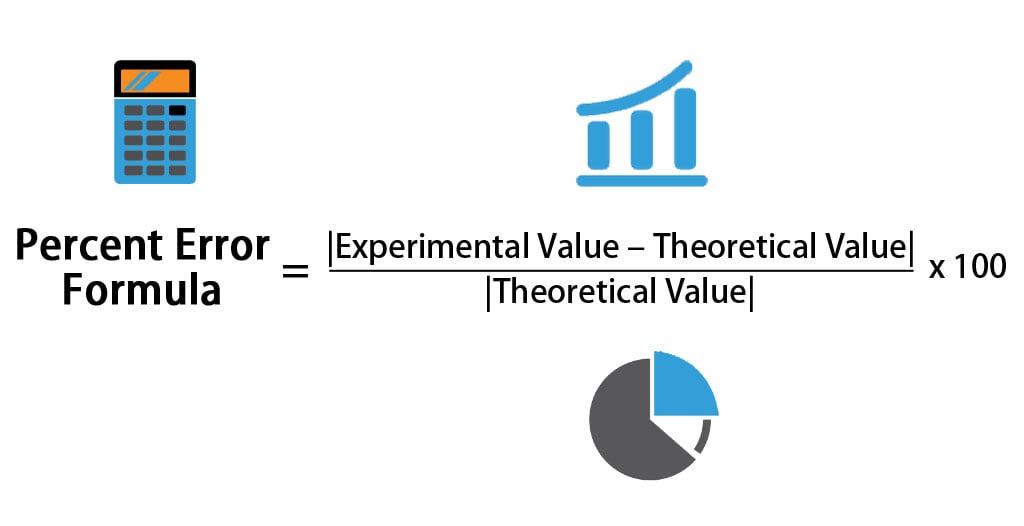
When performing measurements, experiments, or calculations, there’s always a chance of a small difference between the measured value and the true or accepted value. This difference is often expressed as percent error, a concept used across mathematics, physics, chemistry, engineering, and even everyday problem-solving.
Understanding percent error is essential for improving accuracy, evaluating results, and ensuring quality control. In this detailed guide, we’ll break down what percent error is, how it’s calculated, common mistakes to avoid, and where it’s applied in real-world situations.
What Is Percent Error?
Percent error measures the difference between an experimental or measured value and the true or accepted value, expressed as a percentage. It tells you how far off your measurement is from the actual standard.
In simple words:
- If your percent error is 0%, your measurement is perfect.
- If your percent error is small, your measurement is accurate.
- If your percent error is large, there’s a bigger deviation from the accepted value.
Example:
If the actual boiling point of water at sea level is 100°C, but your experiment measures 98°C, percent error will tell you how far off your measurement is from the standard.
Why Percent Error Matters
Percent error is important for several reasons:
- Accuracy Check: It helps determine how accurate a measurement is.
- Error Detection: Large errors indicate mistakes in the method, equipment issues, or calculation errors.
- Quality Control: Industries use it to ensure products meet standards.
- Performance Evaluation: In research, it measures how close results are to expected outcomes.
In academic labs, percent error is often included in lab reports to reflect the reliability of the experiment.
The Formula for Percent Error
The standard formula is:
Percent Error=∣Experimental Value−True Value∣∣True Value∣×100%\text{Percent Error} = \frac{|\text{Experimental Value} – \text{True Value}|}{|\text{True Value}|} \times 100\%Percent Error=∣True Value∣∣Experimental Value−True Value∣×100%
Where:
- Experimental Value (EV): The measured or observed value.
- True Value (TV): The accepted or theoretical value.
- | | (Absolute Value): Ensures the difference is positive.
Step-by-Step Example
Given:
True Value (TV) = 50
Experimental Value (EV) = 47
Step 1: Find the difference.
Difference=∣47−50∣=3\text{Difference} = |47 – 50| = 3Difference=∣47−50∣=3
Step 2: Divide the difference by the true value.
350=0.06\frac{3}{50} = 0.06503=0.06
Step 3: Multiply by 100 to get a percentage.
0.06×100=6%0.06 \times 100 = 6\%0.06×100=6%
Result:
Percent Error = 6%
Percent Error vs. Percent Difference
While percent error compares a measured value to an accepted value, percent difference compares two measured values to see how different they are from each other.
Example:
- Percent Error: Used when comparing an experimental boiling point to the known boiling point of water.
- Percent Difference: Used when comparing two different experimental measurements of the same thing.
Common Mistakes in Calculating Percent Error
Even though the formula is straightforward, errors can happen:
- Not Using Absolute Value: Without it, you could end up with a negative percent error, which can be confusing.
- Mixing Up True and Experimental Values: Always put the true value in the denominator.
- Forgetting to Multiply by 100: This will leave you with a decimal instead of a percentage.
- Rounding Too Early: Always round at the end for more accuracy.
Applications of Percent Error
Percent error is widely used across industries and academic fields.
Science and Research
In chemistry labs, percent error shows the accuracy of chemical reactions, concentrations, or measured quantities.
Example:
If the molar mass of a compound is known and a student calculates it experimentally, percent error shows how close their value is to the accepted one.
Engineering and Manufacturing
Manufacturers use percent error to ensure products meet quality and precision standards.
Example:
If a machine part is supposed to be 10 mm wide but comes out 9.98 mm, percent error tells whether the deviation is within acceptable limits.
Education and Learning
Teachers use percent error to evaluate students’ practical work accuracy in labs.
Everyday Life
Even in cooking, percent error can be applied—especially when converting recipes or scaling ingredients.
Positive vs. Negative Percent Error
While most definitions use absolute value to avoid negative results, in some contexts the sign is important.
- Positive Percent Error: Experimental value is higher than the true value.
- Negative Percent Error: Experimental value is lower than the true value.
This is useful when determining whether an instrument consistently overestimates or underestimates measurements.
How to Reduce Percent Error
Here are practical tips to minimize percent error in measurements:
- Use Calibrated Instruments: Ensure all tools are properly calibrated.
- Repeat Measurements: Multiple trials help identify and reduce random errors.
- Follow Procedures Precisely: Inconsistent methods lead to inaccurate results.
- Control Environmental Factors: Temperature, humidity, and vibrations can affect accuracy.
- Check for Human Error: Recording mistakes or misreading instruments can significantly increase error.
Real-Life Example Calculations
Example 1 – Physics Experiment
True Value: Speed of light = 3.00×1083.00 \times 10^83.00×108 m/s
Measured Value: 2.98×1082.98 \times 10^82.98×108 m/s
Difference = ∣2.98−3.00∣×108=0.02×108|2.98 – 3.00| \times 10^8 = 0.02 \times 10^8∣2.98−3.00∣×108=0.02×108
Percent Error = 0.02×1083.00×108×100=0.67%\frac{0.02 \times 10^8}{3.00 \times 10^8} \times 100 = 0.67\%3.00×1080.02×108×100=0.67%
Example 2 – Chemistry
True density of ethanol: 0.789 g/mL
Measured density: 0.781 g/mL
Difference = |0.781 – 0.789| = 0.008
Percent Error = 0.0080.789×100=1.01%\frac{0.008}{0.789} \times 100 = 1.01\%0.7890.008×100=1.01%
Percent Error in SEO Analytics
While percent error is mainly a scientific and mathematical concept, it also applies in SEO data analysis for websites like seohub.store.
Example in SEO:
If a keyword tracking tool reports a keyword volume of 1,000 searches, but actual analytics show 950, you can calculate the percent error to evaluate tool accuracy.
Difference = |1000 – 950| = 50
Percent Error = 50950×100=5.26%\frac{50}{950} \times 100 = 5.26\%95050×100=5.26%
This helps in assessing the reliability of different SEO tools and making better marketing decisions.
Percent Error vs. Accuracy and Precision
- Accuracy: How close a measurement is to the true value.
- Precision: How consistent repeated measurements are.
- Percent Error: Quantifies the accuracy in percentage terms.
A low percent error means high accuracy, but it doesn’t guarantee precision.
Quick Reference Table
| Term | Meaning | Formula | Example |
| Percent Error | Difference between measured and true value in % | ( \frac{ | EV – TV |
| Accuracy | Closeness to true value | N/A | A dart hitting the bullseye |
| Precision | Consistency of measurements | N/A | All darts hitting the same spot |
Percent Error Calculator Tool
If you’re performing frequent calculations, you can use a simple percent error calculator:
Steps:
- Enter the true value.
- Enter the experimental value.
- Click calculate to instantly get your result.
On seohub.store, you could even integrate a small JavaScript-based calculator to improve user engagement.
Final Thoughts:
Percent error is a powerful way to measure accuracy in experiments, industrial processes, and even SEO analytics. Whether you’re a student, researcher, engineer, or data analyst, understanding how to calculate and interpret percent error can improve the quality of your work.
By applying proper methods, controlling variables, and using the formula correctly, you can minimize percent error and achieve more reliable results.






